
Celaenorrhinus ambareesa, the Malabar spotted flat, is a butterfly of the hesperiid family found in India.

Bibasis gomata, commonly known as the pale green awlet, is a butterfly belonging to the family Hesperiidae. It is found in Northeast India, the Western Ghats and parts of Southeast Asia. The butterfly was reassigned to genus Burara by Vane-Wright and de Jong (2003) and is considered by them to be Burara gomata.

Hasora badra, the common awl, is a butterfly belonging to the family Hesperiidae, which is found in India.
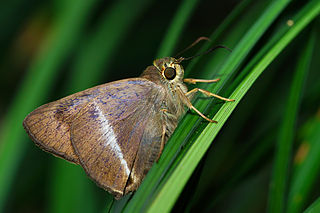
Hasora taminatus, the white banded awl, is a butterfly belonging to the family Hesperiidae, which is found in Asia.
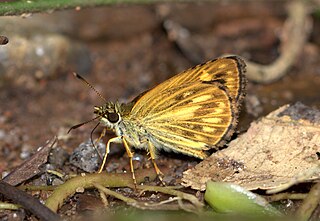
Baracus vittatus, the hedge-hopper, is a butterfly belonging to the family Hesperiidae. It is found in India and Sri Lanka.

Borbo bevani, the Beavan's swift, is a butterfly belonging to the family Hesperiidae. It is named after Captain Robert Cecil Beavan. It is found throughout India.

Cupitha purreea, commonly known as the wax dart, is a butterfly belonging to the family Hesperiidae and only species of the genus Cupitha.

Caprona ransonnetii, commonly known as the golden angle, is a butterfly belonging to the family Hesperiidae. It was first described by Baron Cajetan von Felder in 1868.
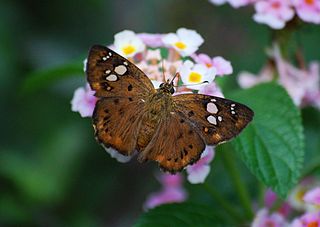
Coladenia indrani, the tricolour pied flat, is a butterfly belonging to the family Hesperiidae found in Sri Lanka, India to Myanmar. The species was first described by Frederic Moore in 1865.
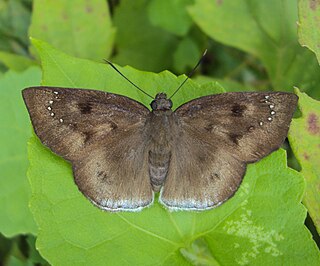
Tagiades gana, the immaculate snow flat, large snow flat or suffused snow flat, is a butterfly belonging to the family Hesperiidae found in Indomalayan realm.

Hyarotis adrastus, the tree flitter, is a butterfly belonging to the family Hesperiidae found in South Asia and Southeast Asia.

Oriens goloides, the Ceylon dartlet or smaller dartlet, is a butterfly belonging to the family Hesperiidae found in India and Sri Lanka and Malay Peninsula.

Hasora anura, the slate awl, is a species of hesperid butterfly found in Asia. In India it is found in Sikkim and the Khasi Hills.
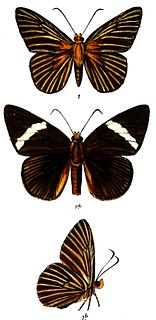
Capilla jayadeva, the striped dawnfly, is a species of hesperid butterfly found in tropical Asia.

Capila zennara, the pale striped dawnfly, is a species of hesperid butterfly found in tropical Asia.
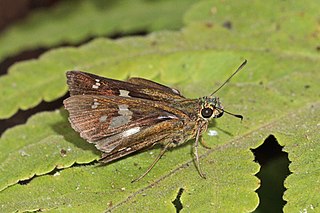
Polytremis eltola, the yellow spot swift, is a species of skipper butterfly found in the Indomalayan realm.

Actinor radians, the veined dart, is a butterfly belonging to the family Hesperiidae, Actinor being a monotypic Himalayan genus.
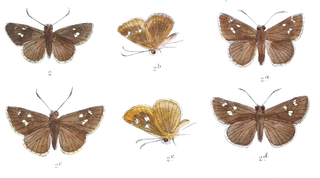
Arnetta atkinsoni is a species of skipper butterfly found in South Asia.

Caltoris cahira austeni, the Austen's swift, is a species of skipper butterfly found in Asia.
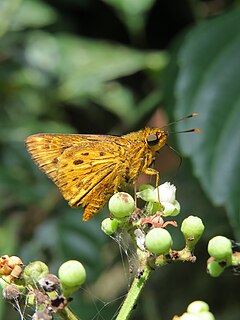
Thoressa honorei, commonly known as the Madras ace, is a skipper butterfly belonging to the family Hesperiidae found in south India.























